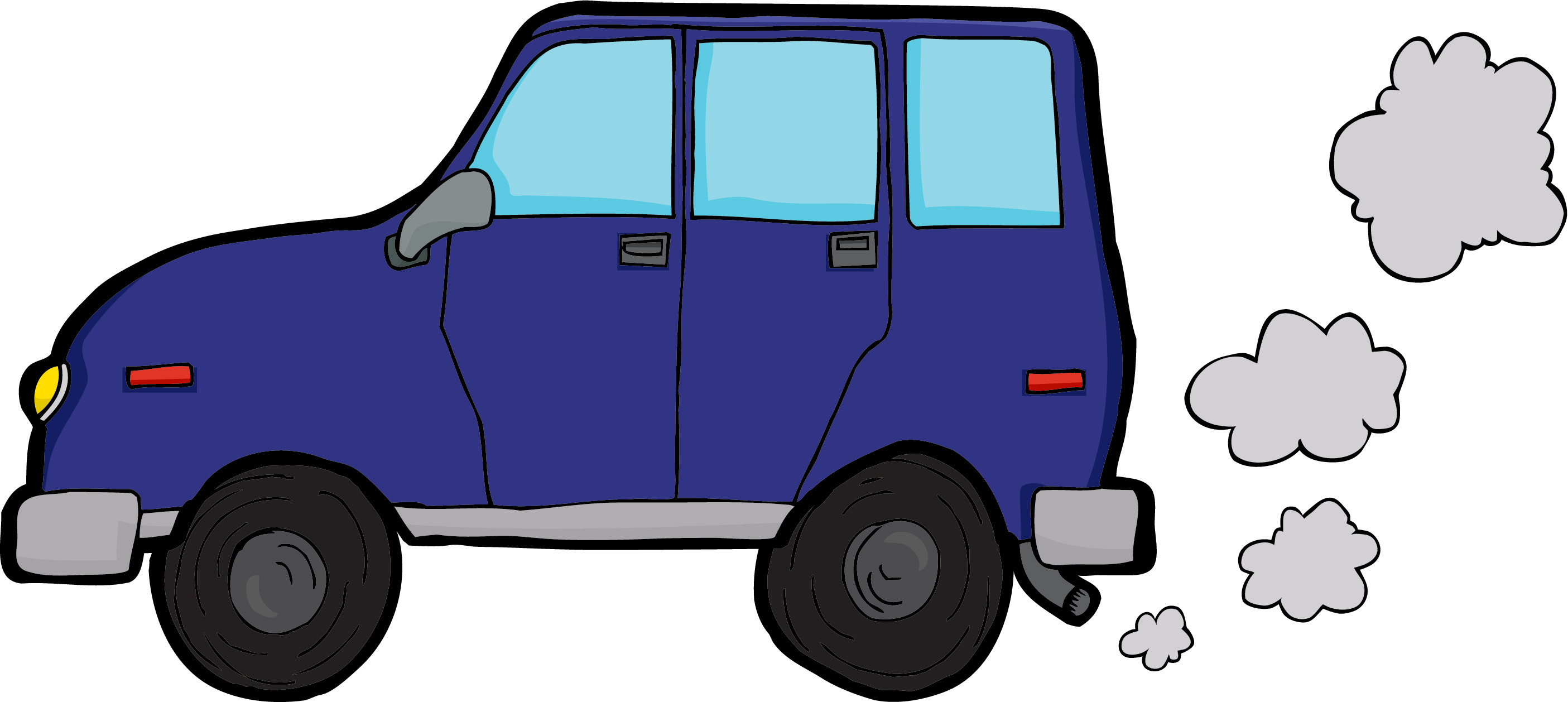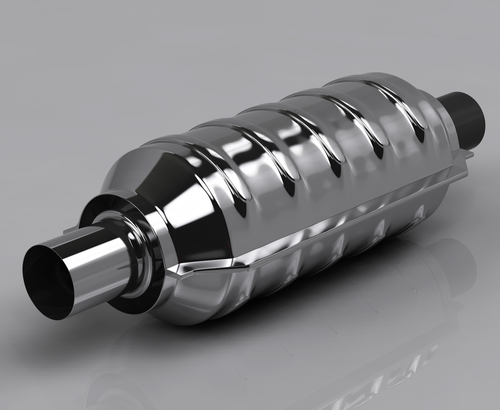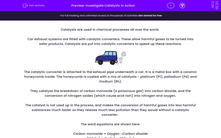Catalysts are used in chemical processes all over the world.
Car exhaust systems are fitted with catalytic converters. These allow harmful gases to be turned into safer products. Catalysts are put into catalytic converters to speed up these reactions.

The catalytic converter is attached to the exhaust pipe underneath a car. It is a metal box with a ceramic honeycomb inside. The honeycomb is coated with a mix of catalysts - platinum (Pt), palladium (Pd) and rhodium (Rh).
They catalyse the breakdown of carbon monoxide (a poisonous gas) into carbon dioxide, and the conversion of nitrogen oxides (which cause acid rain) into nitrogen and oxygen.
The catalyst is not used up in the process, and makes the conversion of harmful gases into less harmful substances much faster so they release much less pollution than they would without a catalytic converter.
The word equations are shown here:
Carbon monoxide + Oxygen→Carbon dioxide
2CO (g) + O2 (g)→ 2CO2 (g)
Nitrogen dioxide → Nitrogen + oxygen
2NO2 (g) → N2 (g) + 2O2 (g)

Catalysts are used in the manufacture of margarine. A metal called nickel is used as the catalyst and it speeds up the hydrogenation of vegetable oils to form a hardened version we can spread on our toast.
The word equation is shown below:
Ethene + hydrogen → Ethane
.jpg)
Catalysts are also used in the Haber process, where ammonia is made from nitrogen and hydrogen. Iron is used as the catalyst in this reaction. Without a catalyst the reaction would take place much slower, which would not be very economical for the company making the ammonia.

There are so many uses of catalysts!
Ready to try some questions?








